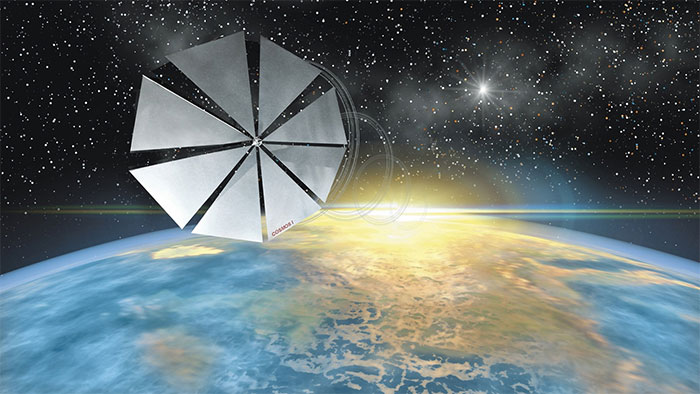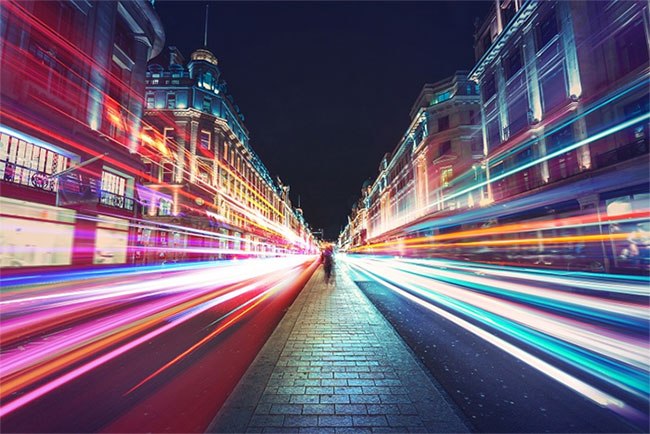What Would Happen If We Could Travel at the Speed of Light? There’s still a long way to go, but this technology may one day allow us to travel from New York to Los Angeles in just one second.
Light is the fastest thing in the universe, with a speed of 299,792,458 meters per second. This means it can travel from Earth to the Moon in just over a second.
Creating vehicles that can reach the speed of light is no easy task. There are too many variables to address. However, the technology we currently use in spacecraft may allow us to harness a small fraction of that speed.

The “solar sail” method applied in spacecraft. (Image: bgr)
Harnessing the Speed of Light for Travel
Traveling at a percentage of the speed of light may not sound like much. However, even at just 1% of the speed of light, we could travel over 11 million kilometers in an hour. This means it would take just over a second to go from New York to Los Angeles. This speed is about 10,000 times faster than traveling on a jet plane.
Of course, harnessing that power is not straightforward. Currently, scientists are researching warp drives, a technology that could help vehicles achieve faster speeds.
In 2010, humanity began using the solar sail method on some spacecraft. The project’s idea is to use large mirrors to capture energy from sunlight, similar to how traditional sails use wind power. There are many complex calculations behind this technology, but if successfully applied on a smaller scale, we could potentially make a breakthrough.
Solar sails are essentially thin mirrors attached to spacecraft. These vessels would use the sunlight they capture to propel themselves forward. Scientists believe that one day they will be able to travel at 10% of the speed of light.

Light is the fastest thing in the universe. (Image: YiuCheung/Adobe)
Why Haven’t We Widely Adopted This Technology?
We have the technology, so why aren’t we using it? It’s not that simple. Energy is a crucial factor in movement. Any object in motion requires energy. This is known as kinetic energy, and to move faster, you will need a lot of kinetic energy. However, the problem is that an enormous amount of kinetic energy is required to increase the speed of an object.
To make something go twice as fast requires four times the energy. To triple the speed of something requires nine times the energy, and this pattern continues. According to The Conversation, it would take about 200 trillion Joules to help a 50 kg teenager move at 1% of the speed of light, equivalent to the amount of energy used by 2 million Americans in a day. If we want to travel at such high speeds, we will need to find new ways to generate kinetic energy.
So far, we haven’t even achieved 1% of the speed of light. In fact, the spacecraft closest to that speed is NASA’s Parker Solar Probe. In 2018, NASA launched the probe from Earth. After launch, it skimmed the surface of the Sun and used gravitational forces to reach speeds of 531,000 km/h, about 0.5% of the speed of light.


















































